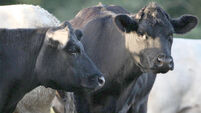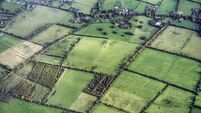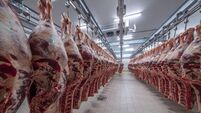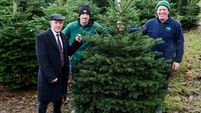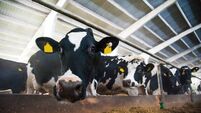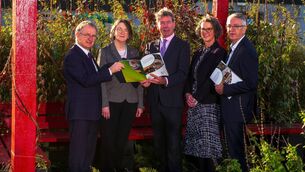Where Ireland is positioned for suckler herd and finisher herd costs
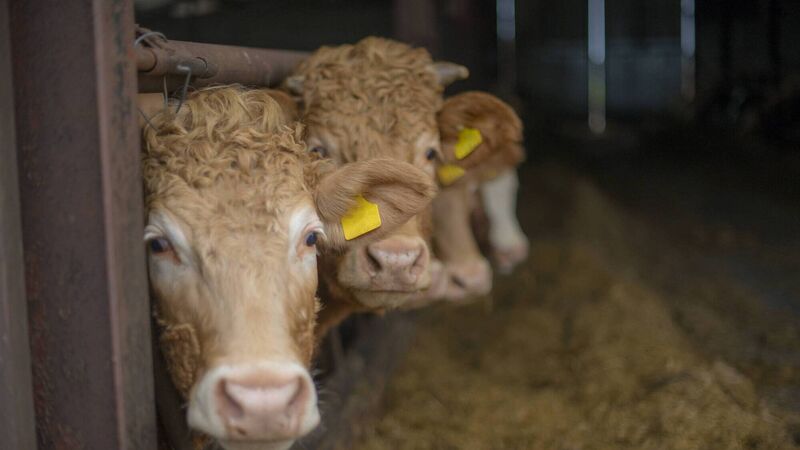
The return to the suckler farmer in Ireland is estimated at only about €250, leaving the farmer operating at a loss.
Ireland is in the middle to high category for suckler herd and finisher herd costs of production, according to recent analysis by the Agriculture and Horticulture Development Board (AHDB) in the UK, and the agri benchmark network of 35 countries.
Their results indicate that 100kg of liveweight can be produced on an Irish suckler farm for just under €350. This closely matches the economics of beef in Canada, and compares to €100 in Brazil, about €200 in Australia, €300 in France, €370 in the US, and €480 in the UK.
Unfortunately, the return to the suckler farmer in Ireland is estimated at only about €250, leaving the farmer operating at a loss.
The analysis was for the 2019 to 2021 period, and looked at cash costs (which include all paid expenses), and non-cash costs (which include the value of family labour and rental value of owner-occupied land). Also looked at was the cost of depreciation of machinery, equipment and buildings.
Returns include the value of calves at weaning as well as cull or breeding cow sales, but do not include decoupled payments typically received by some farms, such as the EU land-based payments, nor the returns from other enterprises on the farm.
There is obviously much dependence on returns from such payments and other enterprise profits, in most major beef-producing countries, because it is only in Brazil and Australia that suckler returns exceed cost, according to the agri benchmark figures. Returns of about €125 and €250 respectively leave the Brazilian and Australian suckler farmer in profit (of about €50 per 100kg of liveweight in both cases).
At about €250, Ireland has the lowest returns of the other five countries. This compares to nearly €300 in France, €310 in Canada, €275 in both the US and the UK.
These results come from the agri benchmark network of 35 countries (including Ireland) that submit data for suckler herd and beef-finishing “typical” farms, using an internationally standardised method of identifying and analysing farms representing typical production systems and their profitability in each country.
In Ireland, suckler farm cash costs were estimated at about €130. Only Australia and Brazil had lower cash costs, at €90 and €40 respectively. Australia and Brazil had the lowest depreciation, the UK the highest. Ireland had the highest non-cash costs (about €180), followed closely by the UK. Non-cash costs ranged from about €40 to €100 in other countries.
According to AHDB, countries such as Australia, Canada, Brazil and the US manage more cows per labour unit than typical UK farms. They will also have little machinery and equipment investment, and rely on grazed grass all year round, with no housing in the winter.
Many farms around the world (in Europe; the North and South Americas; South Africa and Namibia; Australia and New Zealand) typically practice rotational or paddock grazing by measuring and managing forage access and production.
The number of calves weaned per 100 cows put to the bull varies, but the US, France and Ireland typically achieve over 90 calves per 100 cows put to the bull. Canada, Australia and the UK will typically be weaning 85 to 86 calves per 100 cows put to the bull.
There is a significant difference between the countries for age at first calving. In Australia, Canada and the US, cows typically first calve at 24 months of age; at 26 months in Ireland; at 30-31 months in the UK and France; and at 36 months in Brazil (for Bos Indicus cattle).
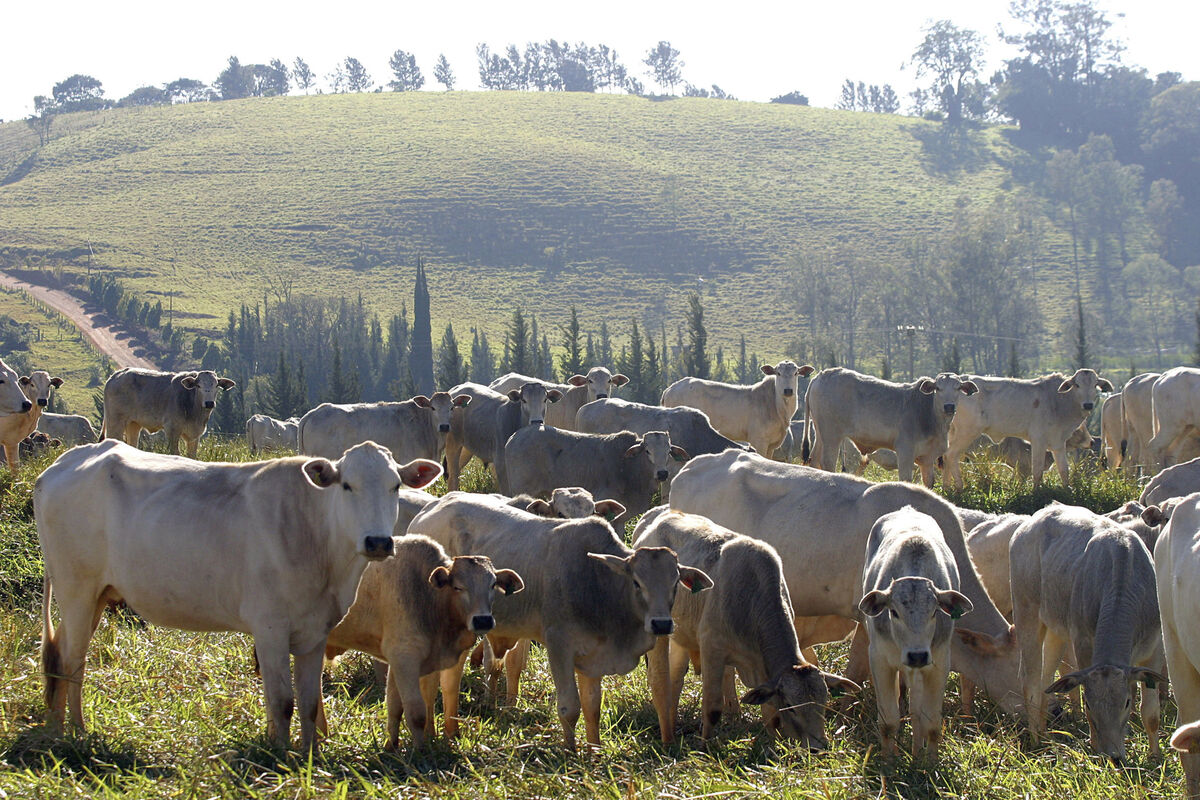
Age at first calving has a significant impact on costs of production, and on the number of calves a cow produces in her lifetime, particularly if farms with the first calving at 24 months of age also have low replacement rates.
Replacement rates in the UK are typically 20%, the same as Australia and Brazil, although it should be noted that Australia and Brazil's replacement rates can be driven by drought conditions and the need to destock.
France typically has a higher replacement rate, at 23% (they have a high demand for cow beef); the other countries have replacement rates between 13% and 17%, thus keeping replacement costs down and selecting and managing cows to remain productive for longer.
Weaning age varies, with Australia and Canada weaning at around 200 days; the US at 210 days; the UK typically at 226 days; France and Brazil at around 240 days; and Ireland at around 250 days.
However, when weaning weights are adjusted to a consistent 200 days of age, most countries are typically achieving 250kgs at 200 days. This uniformity is not surprising, given that most countries have breeds that originate from British or continental beef breeds.
The exceptions are Brazil's 145kgs (from Bos Indicus cattle), and Australia's 225kgs.
The news on production cost is no better for Irish finisher farms.
Finishers in Brazil, Australia, Ireland, France, and the UK were looked at.
On farms where homebred suckler calves are fattened, returns were in the €400 to €500 bracket per 100kg of carcass weight for Australia, Ireland, France, and the UK. The return was just under €200 in Brazil.
For all five countries, costs exceeded returns. This gap between costs and returns was widest in the UK, followed by Ireland, Australia, and France, in that order.
Again, Ireland had the highest non-cash costs, and this was even more obvious on farms finishing purchased cattle. On these farms, Ireland's non-cash costs were estimated at about €200 per 100kg of carcass weight, compared to near zero in the US, Canada, and Australia. This left Irish finishers with costs exceeding €600, compared to a return of only about €400.
Farmers in Canada, Australia, and the UK, finishing purchased cattle, had a return similar to Ireland. Of these, Canadian farmers came closest to breaking even, but American and Brazilian farmers did slightly better, with costs and returns neck-and-neck, at just under €400 in the US, and also matched in Brazil, but at the much lower level of about €200.
AHDB experts observed that in Australia, Brazil, Canada and the US, it is typical to finish cattle in specialist open yards (feedlots) where they are fed on locally produced forage and grain, maize, or byproducts. However, in Australia, there are many farms finishing their home-bred suckler calves on grazed grass, and in Brazil, over 90% of cattle are finished on grazed grass.
The typical age at slaughter varies between countries, breeds, gender, and production systems. In the UK, purebred dairy bulls are often finished in yards at 16 months of age, but the more typical age at slaughter is 20-24 months of age. Finishing in Australia is also typically at 20-24 months of age, except for yard-finished grain-fed cattle at around 21 months.
In Ireland, the age at slaughter is typically around 24 months of age.
In France, a lot of entire male suckler calves are sold at weaning to Italy, because the French consumer prefers heifer and cow meat. The typical age at slaughter in France is 16 months. That is also the typical age of cattle finished in the US in open yards. In Canada, the slaughter age is typically 19-20 months.
In Brazil, Bos Indicus cattle tend to be later finishing than cattle with British-breed backgrounds. Grass-finished cattle (Bos indicus) are typically finished at around 36 months, but grain-fed cattle are typically finished earlier, at 27 months.
Typical carcass weights are 325-340kgs in the UK; 350kgs in Ireland; 370kgs in France and Canada; and 380 to 400kgs in US open yard finishing.
In Brazil, carcass weights are typically 250-280kgs for grass-finished cattle, and 280-295kgs for grain-finished cattle.
In Australia, carcass weights can vary on an annual basis due to the impact of drought conditions. The typical grass-finished carcass is about 250kgs for British breeds. Grain-finished carcasses are typically about 340kgs.

